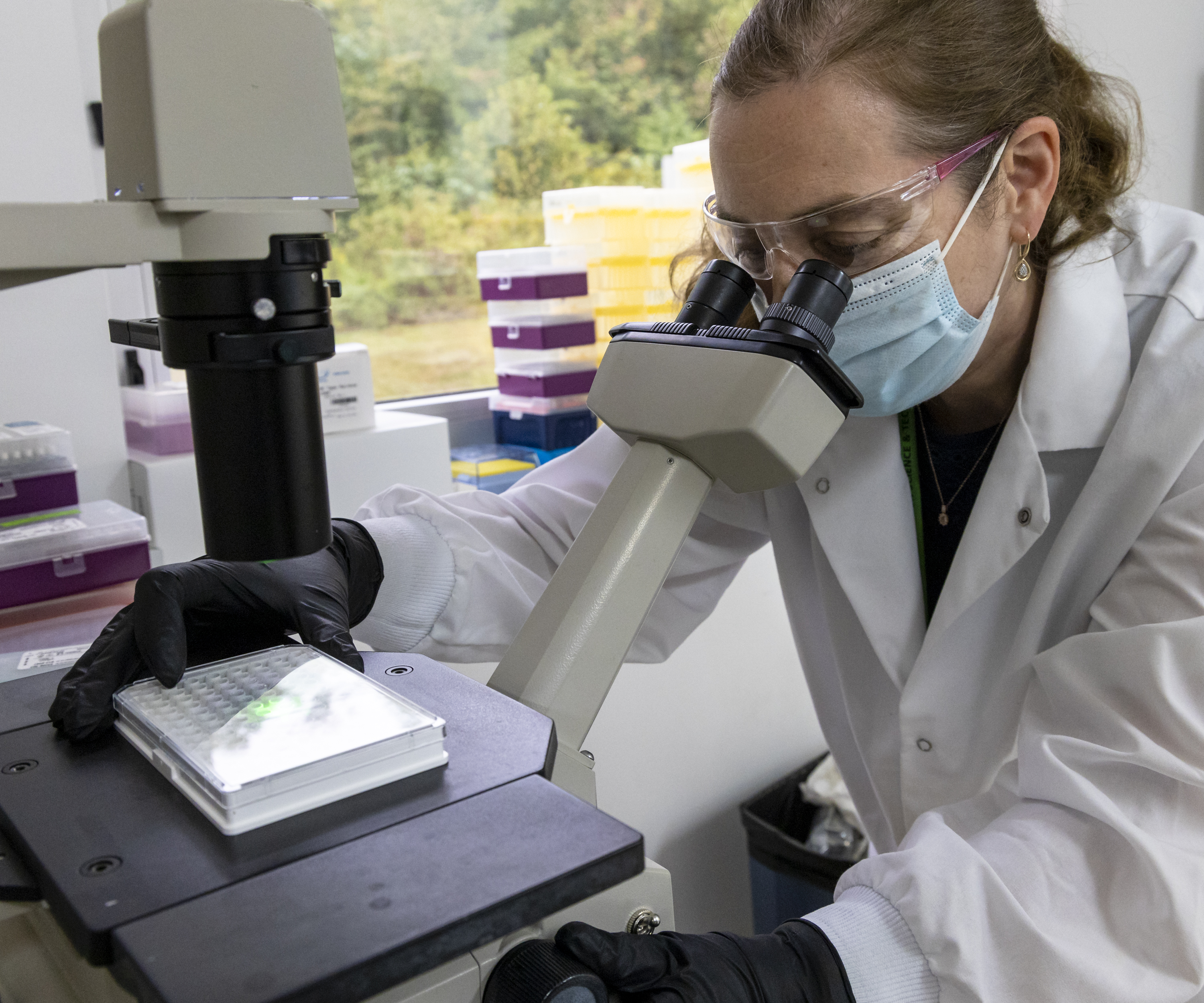A radioisotope researcher in the Radioisotope Science and Technology Division at the Department of Energy’s Oak Ridge National Laboratory, Davern is focusing on ways to use nanoparticles — particles 100 nanometers or smaller that can have special properties — to contain those radioisotopes and deliver them directly to cancer cells, where they can decay into different isotopes that irradiate those cells.
The advantage of using nanoparticles as a delivery method is that those “decay daughters” are contained to the target area, rather than entering the body’s circulation and irradiating healthy tissue, she said.
“This would go to both decrease the dose that is required for treatment, and also to decrease potential side effects,” Davern said. “This treatment appears to be useful for treating metastatic cancers and really small tumors, as well as cancers that have become resistant to drugs so that chemotherapy is no longer appropriate.”
It’s the future — but not that far in the future. Though the system of using nanoparticles to deliver treatments like radionuclides hasn’t entered clinical trials yet, Davern expects to see it in use within her lifetime.
There’s the potential to deliver more than one type of isotope at once, combining radiation with an antibody or an isotope used for imaging, to follow up and see how well the treatment is working, she said. Researchers will use molecular markers in the cancer cells to determine which isotopes might be most effective.
Davern is working with an isotope already approved for use in patients – radium-223, a decay product of actinium-227, which ORNL supplies to Bayer for its Xofigo drug for patients whose prostate cancer has metastasized into bone cancer. Because the isotope is similar in composition to calcium, it targets the bone cells, but it’s currently approved only as a palliative medicine, given only after other treatments have been exhausted.
In the next 10 years, she expects to see such targeted alpha therapy routinely used as a curative option, integrated into the treatment plan early on and in combination with existing therapies like chemo or immunotherapy.
Radium-223 has been approved since 2013. Davern, however, sees it as “the starting point” for developing novel targeting agents — for example, an isotope that would selectively affect the blood vessels of large tumors, cutting off the tumor’s blood supply, while ignoring other blood vessels. Part of Davern’s work is determining the best way to analyze isotopes in cell models, learning the biological consequences of using them.
“We’ll grow little tiny tumors in dishes in our labs, and look at them, and try to kill them,” she said.
Davern’s background is in vascular biology, human disease and interactions between cells. She came to ORNL in 1999 as a post-doctoral student, then worked for an ORNL contractor and raised a family before returning five years ago.
“Most of us are looking for new opportunities; we want to expand our horizons,” she said. “If I hadn’t come to the national lab, I don’t think I would have had that exposure. It really opens up opportunities for collaboration, particularly because we have such diverse scientists and user facilities. On your team you can have engineers, scientists, specialists in nanoparticles, biology, chemistry — you just go out your door and turn left or go across the street, and there they are. And, of course, the fact that it’s got a societal impact motivates you to keep going.”
Davern can envision applications well beyond cancer for isotopes encapsulated in nanoparticles — potential off-label uses treating severe cases of infectious diseases or drug-resistant infections, for example, or even preventing them by affecting the immune system.
“The broad array of radioisotopes that ORNL produces that can be tested and can be experimented with for medical applications is really exciting,” she said. “Every time I think about it, I think about new things we can do.”
UT-Battelle manages ORNL for the Department of Energy’s Office of Science, the single largest supporter of basic research in the physical sciences in the United States. The Office of Science is working to address some of the most pressing challenges of our time. For more information, please visit energy.gov/science.


